Friday , October 09, 2009
By George Russell

How good is the United Nations at reforming itself?
Not good at all, according to a lengthy study this year by U.N. investigators of a grandiose, five-year effort to streamline and coordinate the performance of a $778 million U.N. bureaucracy that is supposed to do what diplomats like to do best: hold meetings.
According to the report, the bureaucracy’s reform effort so far has been a near-total failure.
Distributed to U.N. members in advance of the September opening of the General Assembly, the 24-page evaluation report was prepared by members of the U.N.’s watchdog Office of Internal Oversight Services (OIOS).
After four months spent studying a much-touted “Integrated Global Management Initiative,” intended to improve the performance of the sprawling U.N. conference bureaucracy, the OIOS inspectors declared that they had discovered “no progress or change” in how the organization was able to allocate money and staff around the world.
Nor could the investigators discover any cost savings as a result of the global reform effort. In fact, the report says, “no attempt has been made to track any savings or efficiency gains.”
Nor, the report continued, was there any evidence that successive top U.N. managers had done much to change the situation. They had not, for example, created “mechanisms for coordination and alignment” that would hold managers to account for failing to make the system work better and more coherently.
Just as disturbingly, the inspectors declared that they were “unable to vouch for the accuracy and veracity of data” given to them by the conference bureaucracy for evaluation.
The investigators added that in some cases, records that could be used to compare the delivery of conference services had been “compromised” through “retrospective adjustment.”
Translation: someone apparently fiddled with the books.
CLICK HERE FOR THE OIOS REPORT
The apparently immovable bureaucracy in the line of fire is known as the U.N. Secretariat’s Department of General Assembly and Conference Management (DGACM), a sprawling apparatus of some 2,100 people headquartered in New York City and in outlying “duty stations” in Geneva, Vienna and Nairobi.
DGACM is the plumbing of the U.N. system. Its mandate, according to Secretary-General Ban Ki-moon’sproposed budget for 2010-2011, is to provide “technical support and authoritative advice” as well as “high-quality conference servicing support” — including the publication of rooms full of documents as well as translation services — for all meetings held under U.N. auspices at the headquarters and the three major outlying offices, and elsewhere.
The meetings can range from the grand opera of General Assembly openings, like the session that recently began in New York, to relatively small and out-of-the-way gatherings of experts defining arcane formulas for carbon sequestration.
By 2008 alone, the inspection report says, a boggling array of some 219 different “entities” were included in the department’s formal worldwide conference calendar — a total that by no means exhausts the number of other U.N. bodies that are busy creating and conducting meetings of their own..
DGACM’s share, however, is the U.N.’s centerpiece. On average, over the four years ending in 2008, the inspectors reported, DGACM “planned and serviced” more than 21,300 meetings annually — mainly through a process in which the much larger U.N. headquarters and its three field offices did not coordinate their efforts, move personnel around to meet anticipated demand, or for much of their time use scheduling systems that could even communicate well with each other.
All of that was supposed to change as a result of the “Integrated Global Management Initiative” — except that, after five years of the initiative, at a cost that the evaluation report does not reveal, the inspectors declared it hadn’t.
The Global Initiative got underway in 2004, after years of repeated U.N. General Assembly resolutions urging greater integration of the conference services. (At the time, DGACM’s No. 2 was a German national, Angela Kane; she is now the U.N.’s Undersecretary-General for Management. Questions from FOX News to Kane about the origins of the Initative were not answered.)
The first effort of the Initiative was to spawn nine separate DGACM task forces, which chewed things over for about two years as they agreed that the bureaucracy should assemble a “compendium of administrative policies, practices and procedures” across the worldwide system — a complete picture of how the global bureaucracy actually worked.
The idea was that the compendium would be a “living document” that would allow different branches of the conference bureaucracy to alter their procedures in order to work better together. The compendium took two years to put together, from 2005 to 2007.
And when it was done, it could hardly be called “living.” According to the OIOS investigators, rather than a road map to change, the compendium became an encyclopedia of stasis: it merely enumerated differences in the way the bureaucracy worked in New York, Geneva, Nairobi and Vienna, without any subsequent pressure for change in anything. “Inexplicably,” the OIOS evaluation notes, “some staff were unaware of its existence.”
Instead, reform lurched off in a new direction at the suggestion of a consulting firm in 2006: creation of three separate information technology projects, known collectively as the Integrated Conference Management system, the cost of which is not mentioned in the OIOS report.
The three systems were intended to integrate conference statistics, meeting planning and documentation processing, and according to the report, consumed “much time and energy.” So far, however, none of the elaborate info-tech systems has been completed.
The outcome: after five years of effort, DGACM still does not have centralized information about its operations, lacks integrated softwear to schedule meetings or allocate staff on a global basis, and does not appear to be anywhere near a software solution for its document processing and planning needs
The OIOS inspectors noted acidly that “an inordinate amount of time has been spent on discussions about the relative merits of off-the-shelf hardware versus customization and in-house versus external information technology expertise, resulting in a diversion of efforts to deal with the underlying substance of workflow practices.” In short, “a waste of both resources and time.”
In one of the few attempts at irony in the densely worded documents, the OIOS authors note that one possibility for the fizzle is that “no doubt the five-year period of observation is fairly short relative to the complex changes that have occurred in the Department arena.”
The main reason for the lack of results, however, is a deeper problem: The U.N. Secretariat, despite its constant invocations of global reform, doesn’t seem to want things to be different. Neither the U.N. Secretary General nor his top managers, the report notes, have removed some fundamental obstacles to change in what the report calls DGACM’s “dual-governance arrangement.”
At the heart of the problem is the fact that while the head of the conference bureaucracy in New York is responsible for the huge overall budget of the conference department, the investigators say, the authority for how the funds are spent outside of headquarters remains with the heads of the Geneva, Nairobi and Vienna offices.
The announced 2010-2011 budgetary spending in those three outlying offices amounts to about $325 million — or about 42 percent of the global total. The offices also have about 47 percent of the global conference staff.
(The $778 million total figure for the entire conference department includes “regular,” “extrabudgetary” and “shared” spending. Under the normal U.N. rules for cost sharing, the U.S. would be responsible for 22 percent of the so-called “regular” two-year budget that forms most of that total, or about $147 million, as well as undetermined parts of the rest.)
In other words, there is no incentive for the bureaucracy outside New York City to change its ways. Indeed, the report says, many staffers at the conference bureaucracy’s outlying offices see their different ways of doing things “as an insurmountable obstacle” to exactly the kind of reform the organization claims to seek.
Ban Ki-moon himself has most recently kept the “dual-governance arrangement” in place.
As recently as March 2009 — around the same time that the OIOS evaluation of the conference bureaucracy began — Ban announced the reorganization of the U.N.’s Nairobi office in a bulletin that kept the decentralized “management challenge,” as the OIOS report puts it, as the basis for the office’s operations.
Nonetheless, in a document to the General Assembly dated July 19, 2009, entitled “Pattern of Conferences,” Ban declared that his conference department in 2008 had “pushed ahead” in the “implementation of its reform process.”
The same document also said it was “largely in agreement” with the evaluation of that reform carried out by OIOS — then began a lengthy rebuttal by adding that it “does not share the pessimistic tone and tenor of the report regarding the very existence of integrated global management having only a marginal effect.”
Ban’s report claimed that two of the three information technology projects were either being “pursued energetically” or had “advanced considerably.” The document planning project, Ban admitted, had “encountered challenges” and “would require further redesigning and implementation in 2010.”
Ban’s document further says that in 2008 “the head of the [conference] department began to exercise more deliberately and forcefully the mandate” to direct the use of his bureaucracy’s huge resources, even without the “attribution of direct managerial authority” to do so.
Meantime, the much touted Integrated Global Management Initiative is still supposedly chugging ahead, through the tangled and expensive world of U.N. conferences.
George Russell is executive editor of Fox News



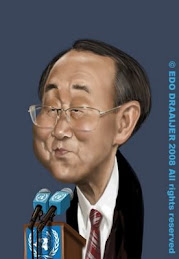

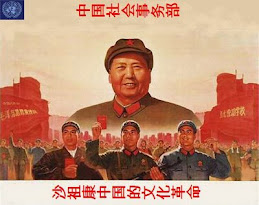










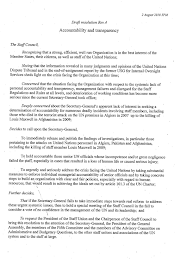

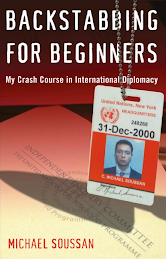
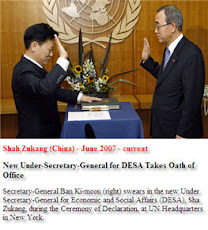
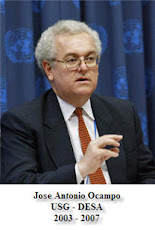
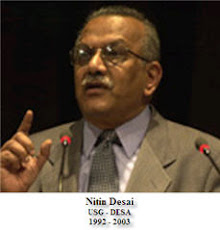
No comments:
Post a Comment